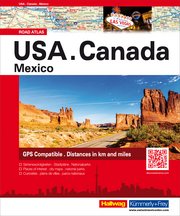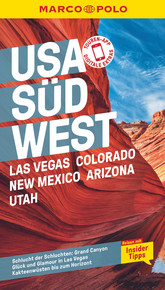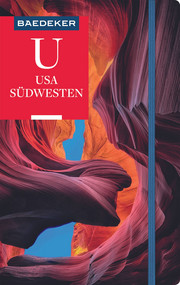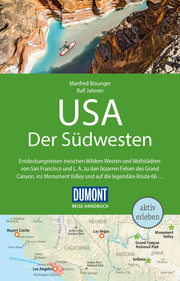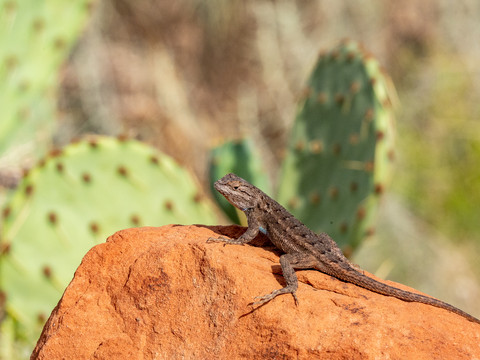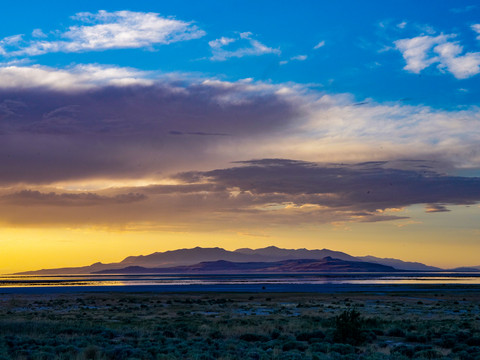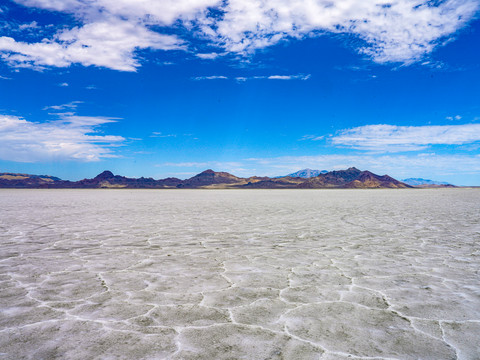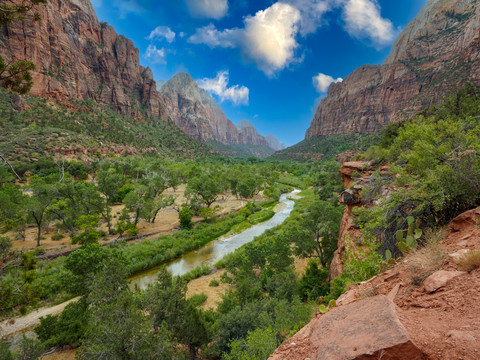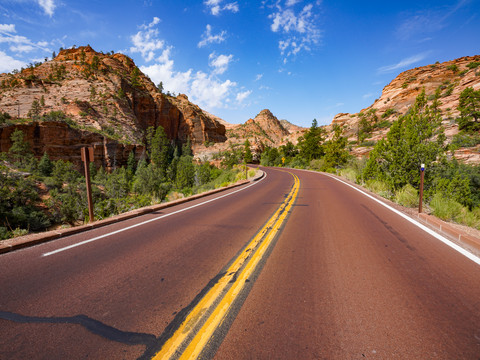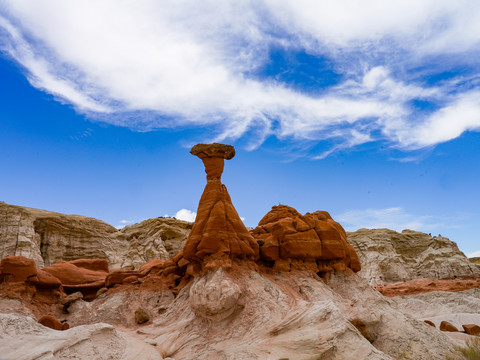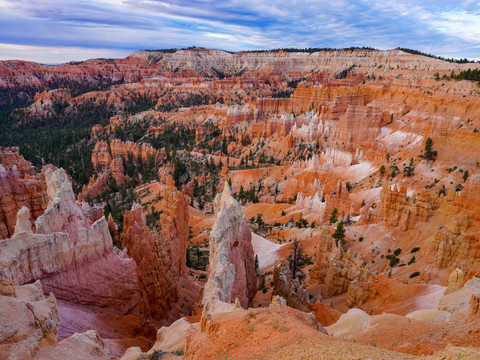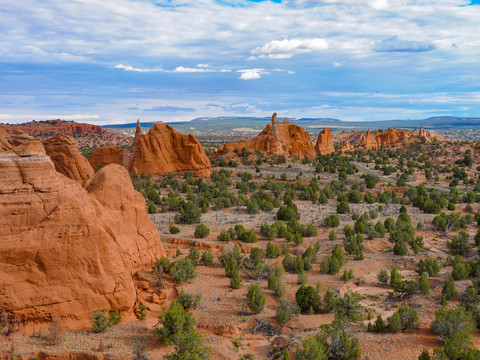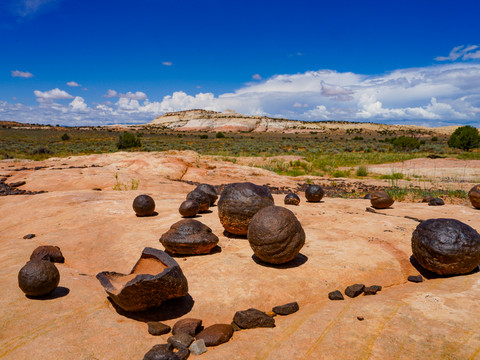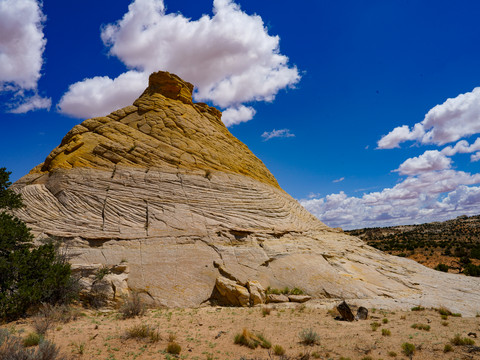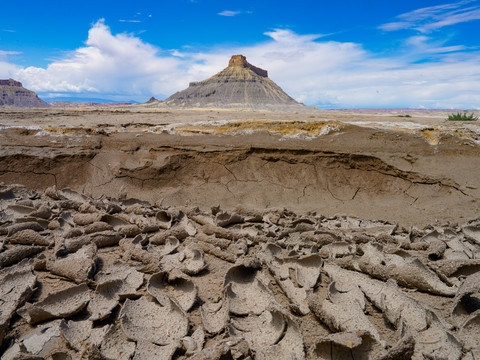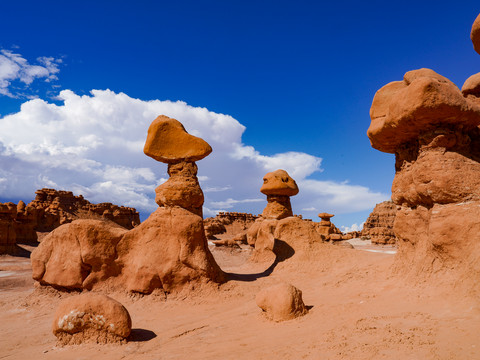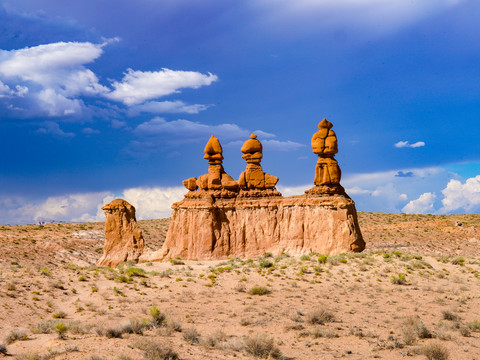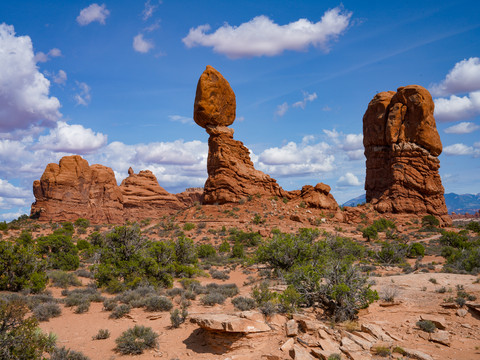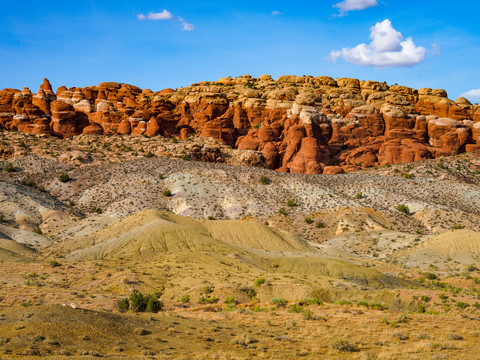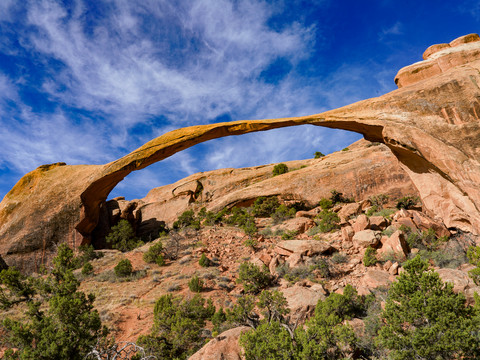Bryce Canyon, Zion, Arches. The state of Utah is home to some of the most beautiful national parks in the entire USA. Impressive erosion landscapes and colours in all shades make the region a very special place. Hardly any other state embodies the term "outdoor adventure" as aptly as Utah. The north offers extensive mountain scenery, such as Logan Canyon and Bear Lake, and Salt Lake City, a metropolitan region that offers arts and culture. Most visitors, however, concentrate on the south - and rightly so! Here, five spectacular national parks are located almost next to each other. They can all be wonderfully combined on a round trip and linked to destinations such as Las Vegas or the Grand Canyon National Park. No matter what your destination in Utah is - you will find opportunities for hiking, camping or relaxing everywhere.
The ideal starting point for a round trip through Utah is Las Vegas or, even more ideally, the capital of the Mormon state. Salt Lake City itself doesn't have too much to offer, but a side trip to Antelope Island is worthwhile instead. Those who like barren landscapes will love the 120 km long island in the middle of the Great Salt Lake. The state park is accessible by well-maintained roads and numerous hiking and riding trails. With a little luck, you can spot pronghorn antelope, which gave the island its name, as well as deer, bighorn sheep and bison, 600 of which live in the park. If you want to experience the salt flats in an even more impressive way, we recommend a detour to the Bonneville Salt Flats. From a rest area on Interstate 80, you can walk onto the seemingly endless expanse of white. The more adventurous take the car for a spin over the salt crust. No wonder: in August, horsepower-laden futuristic bolides gather for the annual racing festival.
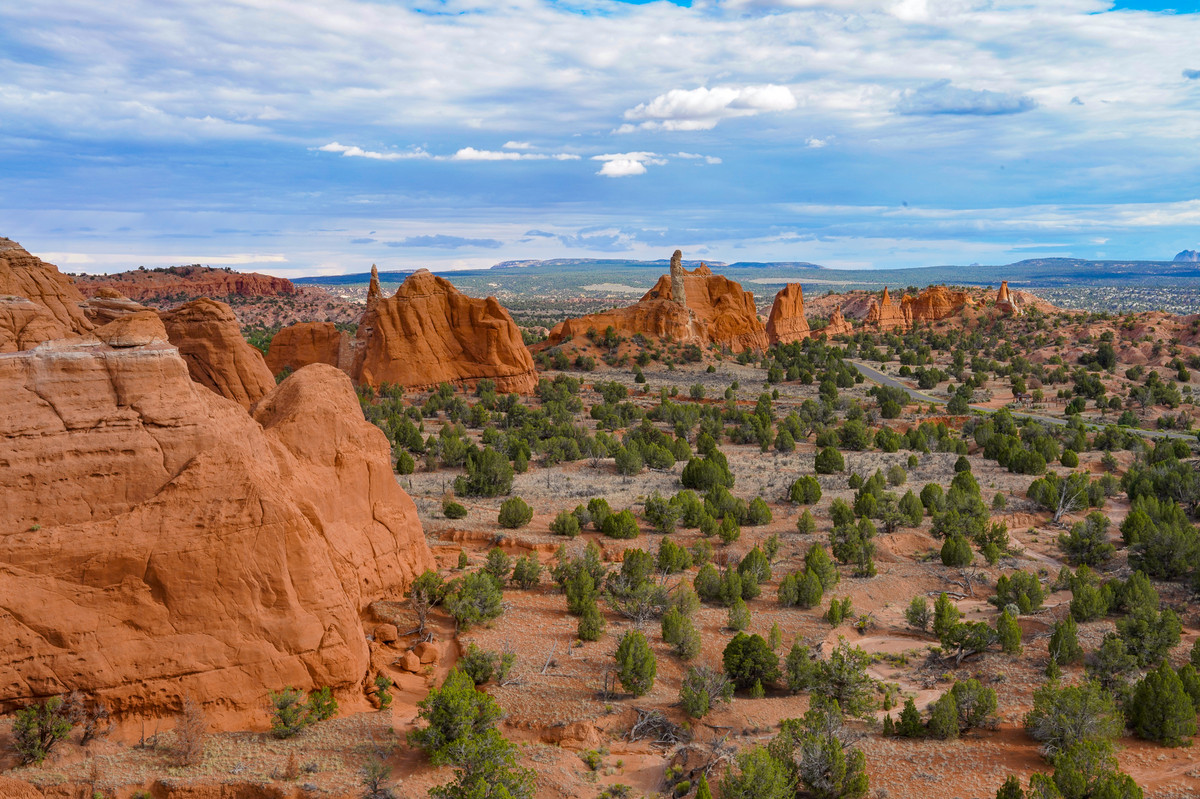
Nowhere else do red sandstone backdrops perform such spectacular capers as on the Colorado Plateau, which is comparable in size to Germany and also stretches across southwestern Utah. Zion, the oldest and one of the most beautiful parks in Utah, is where these colourful stone formations begin. When Mormon settlers arrived in this area in the 19th century, they declared the area to be the "natural temple of God" and named it "Zion" according to their ideal. When I visited Zion Canyon, it was clear to me why the Mormons held the area in such high esteem. Even if it is hard to imagine that it was the small Virgin River that formed these steeply towering walls of sandstone for millions of years. Zion National Park is not a "quick" park. It cannot be crossed by car, and there are no typical viewpoints. Instead, Zion National Park is a huge hiker's paradise that is probably unique in the world! In order to penetrate deeper into the beautiful nature on dozens of hiking trails, you should plan accordingly for time. For example, the Narrows, a gorge where good footwear is advisable, the path usually runs in a stony, mostly flooded river bed. Angels Landing, on the other hand, promises sensational panoramic views. This demanding four-hour hike is not only a physical challenge, but also a mental one for people with a fear of heights. Along Highway 9 via the east exit, the park shows a beautiful face shaped by wind and weather. Rock spires, pillars and slabs of stone stacked like pancakes make the natural landscape an adventure playground. Some rock surfaces have been given strange patterns by the wind, such as the famous Checkerboard Mesa.
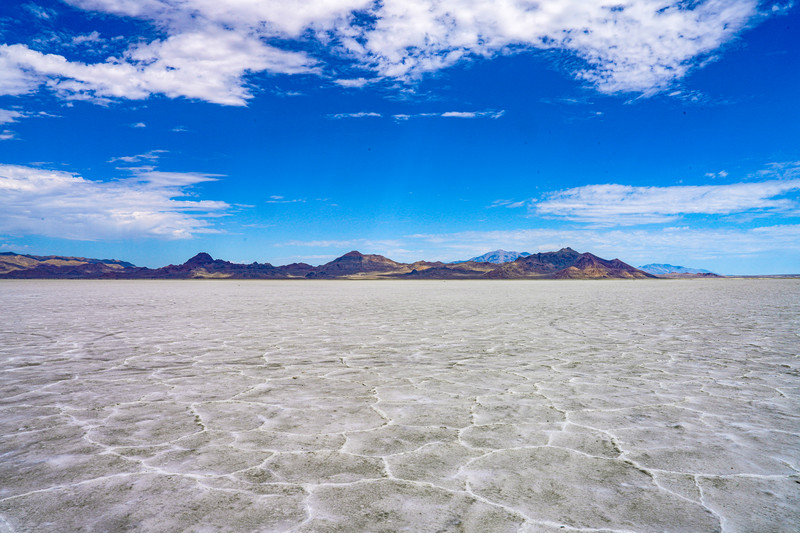
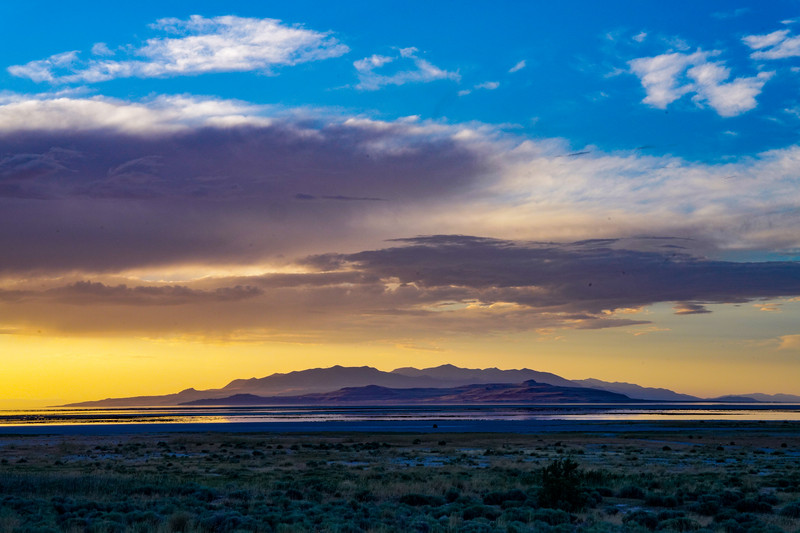
Barely an hour and a half's drive later, you are standing in front of the next highlight and one of America's most extraordinary natural wonders. Bryce Canyon National Park is not particularly large, but it is a real jewel in Utah. The view from the rim at 2'700 metres into an amphitheatre of countless orange rock needles is more than impressive. Thousands of years ago, rain, wind and snow formed basalt and sandstone into countless so-called "hoodoos" that rise up to 60 metres into the air. Besides bizarre shapes, different colours fascinate the rock. Most common are shades of red caused by iron oxides. Where the rock has light tones, the iron is usually only washed out. Purple and lilac colourings, on the other hand, are caused by manganese.
There are even more colours and shapes on Highway Number 12, which I cannot recommend enough at this point - it is rightly considered one of the most beautiful scenic highways in Utah, if not in the entire USA. Via Topic, Escalante and Boulder, the 200 km route winds over rugged terrain in an arc northwards towards Capitol Reef National Park. The Escalante-Torrey section crosses a lunar landscape of slickrock formations, leads over narrow ridges and overcomes a 3300-high mountain. Those with plenty of time and a four-wheel drive vehicle will enjoy the Grand Staircase Escalante National Monument. The GSENM covers a huge area of 7,689 km² of rocks, forests and streams, totally isolated and simply spectacular. Here you will find hidden slot canyons, petrified marbles or wonderful waterfalls.
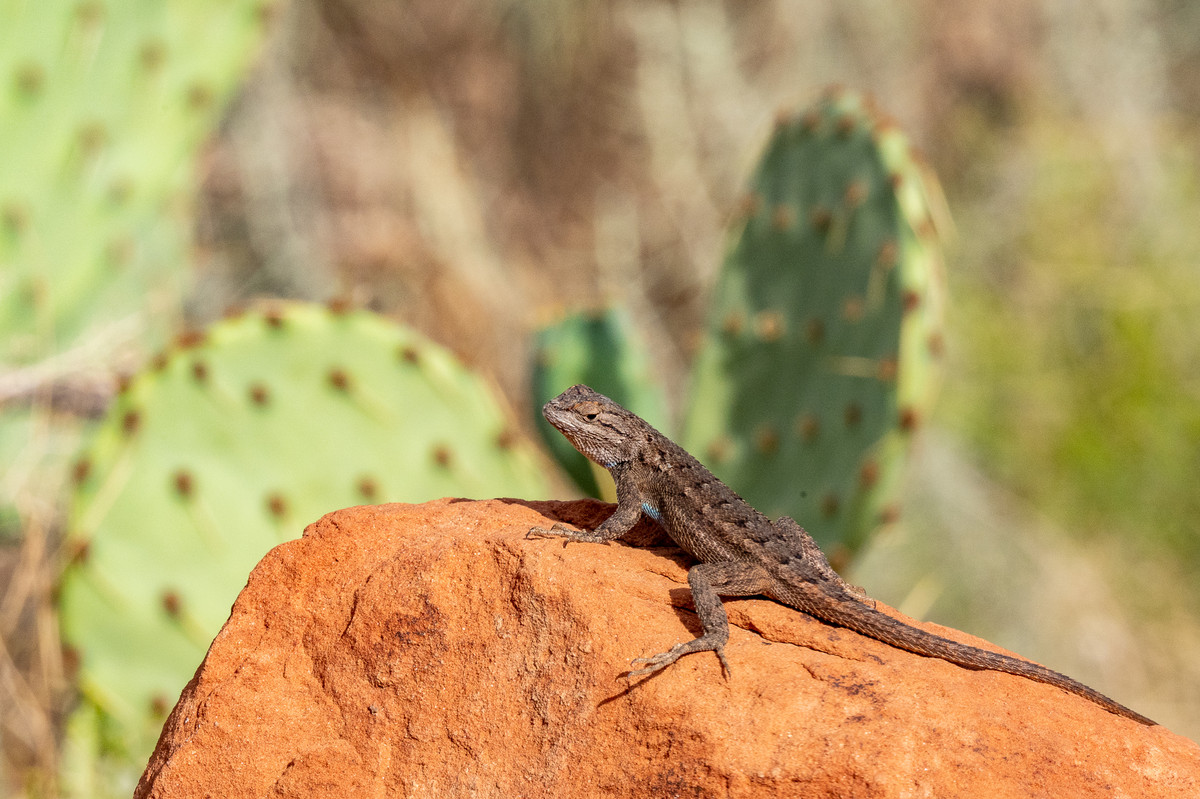
If you continue east on Panorama Road 12, you will soon reach Capitol Reef National Park, which has a gigantic rock fold in the earth's crust 160 km long. This impressive rock arch is the landmark of Capitol Reef National Park - along with many other colourful cliffs, rock arches and monoliths. All of them were formed by the same powerful forces that shaped the Colorado Plateau 65 million years ago. A very well-developed network of trails leads hikers to all the sights, of which this national park has more than a few to offer.
Now it's time to decide whether to head for Arches National Park. If you have plenty of time, the additional loop into the Valley of God and Monument Valley is worthwhile. On the state border of Arizona and Utah lies probably the best-known and most famous motif of the "Wild West": Monument Valley. The red mesas surrounded by an empty, sandy desert can be found in countless western films or on posters. Monument Valley is a sacred place for the Navajo Nation and has not changed its appearance for many millennia. Some of the most famous formations are the "Mittens", two eroded mounds with thumb-like towers.
Those heading for Arches National Park without a "diversion" should at least not miss Goblin Valley. A fascinating place where photographers can really let off steam. Numerous stone formations are reminiscent of mushrooms or goblins. A spur road about 20 kilometres long brings you to your destination in about 30 minutes from Highway 24. From the car park, you can get a good impression of the rocks on a short loop through the valley. In addition, there are other short hiking trails to marvel at the whimsical stones up close.
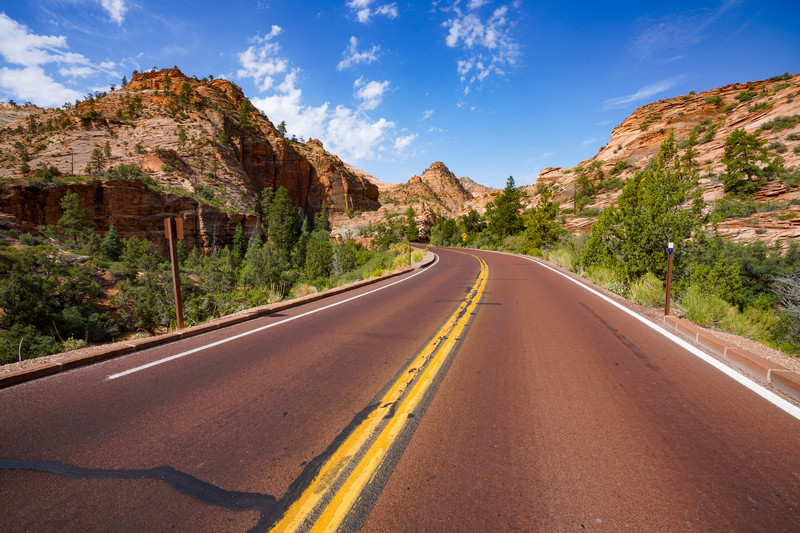
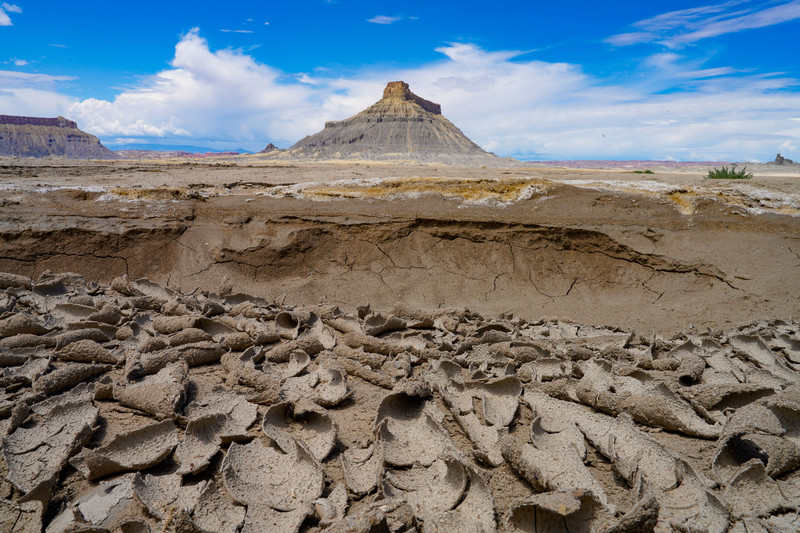
For me personally, one of the most beautiful national parks in the USA is located in the extreme northeast of Utah. In Arches National Park you will find one of the highest concentrations of natural sandstone arches in the world, with openings ranging from one metre in length to the longest stone arch, the Landscape Arch, whose arch stretches 93 metres across the ground. Although there are more than 2000 stone arches in the entire park, there is also an amazing variety of other geological formations. In front of the gigantic sandstone fins, massive rock overhangs and towering rock needles, one feels tiny on the viewpoints and hiking trails.
For those interested in palaeontology, we recommend the Dinosaur National Monument on the way back to Salt Lake City, one of the most important dinosaur excavation sites on American soil.
After so many impressions, simply switch off and unwind; this is perfectly possible at the end of the round trip in the Wasatch Mountains at the Sundance Resort founded by Robert Redford. A paradise for winter sports enthusiasts in winter, you can find peace and quiet in summer. Here you can go horseback riding, fly fishing, do yoga, visit SPAs, climb Mount Timpanogos, visit grandiose restaurants and spend the night in a rustic luxury cottage.
Back in Salt Lake City, it's always worth taking a look at Utah's capital before flying home, even if it can't be compared to cities like San Francisco, Los Angeles or Las Vegas. SLC has retained the flair of a small town. Despite the omnipresence of the Mormons, there is a liberal spirit, and gourmets can enjoy a wide selection of international restaurants. The city's most famous landmark occupies a 4-acre block lined by a 4-metre-high wall. The Mormon Temple can be visited on a free guided tour. There are also a handful of interesting museums waiting to be discovered. Worth mentioning is the Clark Planetarium, which offers the latest and greatest 3D sky shows. If you're really thirsty, you'll find an incredible 140 types of beer and 13 types of sausage at the Beer Bar. Shopping as an experience goes particularly well in a former tram depot, where numerous shops and several cafés await customers. You're sure to find a souvenir for your loved ones back home.

To properly prepare for your trip
How to get there:
By plane non-stop to Las Vegas or with a stop in Paris/Amsterdam to Salt Lake City.
How to get around:
www.sunnycars.ch
How long to go:
At least two, better three weeks
Best time to travel:
May - September
Highlights:
Zion, Bryce and Arches National Park, Highway 12, Goblin Valley
Accommodation tip:
www.sundanceresort.com
Activities:
www.getyourguide.ch
More info:
https://www.visitutah.com
Realised by Michael Bachmann
Further travel pictures under www.kissed-by-nature.com

